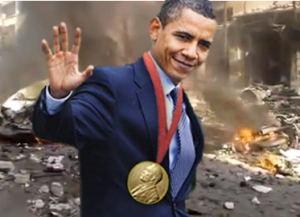How CIA and Allies Trapped Obama in the Syrian Arms Debacle
And why it ultimately benefitted terrorists like Al Qaeda.

Featured image: Free Syrian Army (Source: Dona_Bozzi / Shutterstock.com)
Last week a Trump administration official decided to inform the news media that the CIA program to arm and train anti-Assad Syrian forces had been terminated. It was welcome news amid a deepening U.S. military commitment reflecting the intention to remain in the country for years to come. As my recent article in TAC documented, the net result of the program since late 2011 has been to provide arms to al Qaeda terrorists and their jihadist and other extremist allies, which had rapidly come to dominate the military effort against the Assad regime.
The Trump administration’s decision to acknowledge explicitly its decision to end the program invites a more systematic analysis of why and how such a program, which was so clearly undermining a fundamental U.S. national-security interest, could have gotten started and continue for so long. The preliminary version of the program that began in late 2011 is easier to explain than its more direct form two years later, which had continued (at least formally) until now.
One of the keys to understanding its origins is that the program was launched not because of a threat to U.S. security, but because of a perceived opportunity. That is always a danger sign, prompting powerful national-security bureaucrats to begin thinking about a “win” for the United States. (Think Vietnam and Iraq.)

The opportunity in this case was the rise of opposition protests against the Assad regime in spring 2011 and the belief among national security officials that Assad could not survive. The national-security team saw a shortcut to the goal. Former Obama administration official Derek Chollet recalled in his book The Long Game that Obama’s advisers were all talking about a “managed transition” and urging Obama to publicly demand that Assad step down, according to Chollet. What that meant to Obama’s advisers was bringing pressure from outside, including providing arms to the opposition.
That was wishful thinking not only in regard to the willingness of an Alawite-dominated regime to hand over power to its sectarian foes, but in regard to the assumed Iranian willingness to go along with toppling the regime. Not one of Obama’s advisers had sufficient understanding of regional dynamics to warn the President that Iran would not allow their Syrian ally to be overthrown by an opposition supported by Sunni states and the United States.
But the decisive factor in pushing the administration toward action was the pressure from U.S. Sunni allies in the region—Turkey, Saudi Arabia and Qatar—which began in autumn 2011 to press Obama to help build and equip an opposition army. Turkey was the leader in this regard, calling for Washington to agree to provide heavy weaponry—including anti-aircraft and anti-tank missiles—to the rebel troops that didn’t even exist yet, and even offering to invade Syria to overthrow the regime if the U.S. would guarantee air cover.
In the ideology of the national security elite—especially its Democratic wing—regional alliances are essential building blocks of what is styled as the U.S.-sponsored global “rules-based order.” In practice, however, they have served as instruments for the advancement of the power and prestige of the national security bureaucracies themselves. The payoffs of U.S. alliances in the Middle East have centered on the military bases in Turkey, Saudi Arabia, and Qatar that allow the Pentagon and the military brass to plan and execute military operations that guarantee extraordinary levels of military spending. But enormous Saudi arms purchases and the financing of any covert operations the CIA doesn’t wish to acknowledge to Congress have long been prime benefits for those powerful organizations and their senior officials.
Then CIA Director David Petraeus was particularly interested in ginning up a covert operation to arm and train the Syrian opposition. With the security bureaucracies supporting the allies’ desire to unseat Assad, Hillary Clinton, whose sympathies and political strategy always lay with the war, eagerly took the lead to take the lead in the administration on arming the rebels and calling for a “no fly zone,” which the Turks badly wanted.
Despite this set of interrelated factors pulling the administration toward a policy of regime change, Obama said no to heavy weapons, a no-fly zone, and an official U.S. role in arms supply. What he did agree to, however, was a covert CIA operation designed by Petraeus to load weapons from Libyan government stocks in Benghazi on ships and arrange for them to be shipped to the war zone. It was Obama’s way of placating all of the actors pushing for an aggressive policy of regime change in Syria without being publicly committed to regime change.
That program, which began in October 2011, was halted abruptly by the attack on the embassy annex in September 2012. But by that time the Obama administration already knew that the weapons were falling into the hands of al Qaeda’s Syrian franchise al Nusra Front, as administration official revealed to the New York Times. Meanwhile the Saudis, Turks and Qataris were pushing arms to groups with military arrangements with al Qaeda’s al Nusra Front at a feverish pace, and the Saudis had begun making deals in Eastern Europe for the heavy weapons, clearly intending to equip a large conventional army.
The danger signals of a policy gone horribly wrong could hardly have been clearer. But at that moment in the summer and fall of 2012, Clinton and Petraeus began a new push for the CIA taking on the role of arming its own hand-picked “moderate” groups. Clinton argued in a White House meeting that the United States needed to have “skin in the game” in order to persuade its Sunni allies to steer weapons away from the terrorists.
But Obama fended off that proposal, citing the blowback from the U.S. Afghanistan adventure. While the debate continued in late 2012 and early 2013, the CIA did a series of studies—evidently ordered by the White House—of past efforts to build up insurgent armies from scratch. The conclusions were not encouraging, as someone defending Obama’s position in the debate leaked to the Times.
But then in early December 2012, Obama made a fatal political error: He introduced a “red line”—the use of a chemical weapon in Syria. Sure enough, within weeks the first rebel allegation of a regime sarin attack was made in Homs. And although the Obama administration quickly investigated and found that it involved tear gas, it was soon followed by a series of new claims of regime chemical attacks in March and April 2013, in which the evidence was very murky at best.
Of course Obama’s national security team, in concert with the Sunni allies, pounced on the opportunity to push even harder for a new U.S. program of direct military aid to the “moderates.” Obama sought to avoid being sucked deeper into the Syria conflict; the administration even got the intelligence community to issue an unusually inconclusive intelligence finding on the alleged chemical weapons attacks in late April.
But for a second time, Obama also agreed to a CIA program of helping to arm the anti-Assad forces; it was a way of placating his own national security apparatus and U.S. allies while avoiding an open commitment to the war. And when nothing happened in the secret program for weeks, Obama’s national security team used an alleged crisis in the war to tighten the pressure on him to move more decisively. Secretary of State John Kerry and unhappy CIA officials arranged for a rebel commander to call into a White House meeting with the claim that Syrian and Hezbollah forces were threatening to bring about the collapse of the entire anti-Assad war.
Kerry warned that Obama would be blamed by U.S. allies for the outcome and proposed missile strikes on Assad’s forces. Within days, the White House ordered a new intelligence assessment that expressed “high confidence” that the Syrian regime had used sarin repeatedly and immediately made its conclusion public. And simultaneously the White House announced publicly for the first time that the U.S. would provide direct assistance to the opposition and leaked it to the Times that it would involve military assistance.
So at the very moment when Washington should have been exerting pressure on its allies to stop pouring arms into an anti-Assad war that was systematically building up al Qaeda’s power and influence in the country, the Obama administration was caving in to those allies. The reason was simple: Powerful national security bureaucracies were threatening to blame Obama for the failure of their heroic effort to save the anti-Assad war.
The lesson of the entire affair is clear: A malignant alliance between powerful national security bureaucracies and the Middle Eastern allies with whom they enjoy mutually profitable relations are pressuring the White House to approve actions that threaten the real interests of the American people—including strengthening terrorists. The only way to reverse that situation is to direct public attention to that malignant alliance of interests, which has thus far gotten a free ride.


